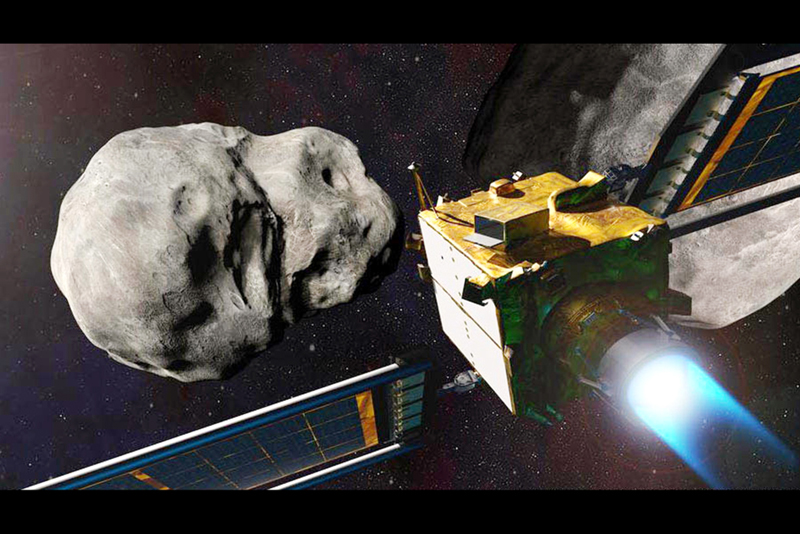WASHINGTON, Sept 27:
After flying in space for 10 months, a NASA spacecraft successfully crashed into an asteroid today in a first-of-its-kind mission to test whether space rocks that might threaten Earth in the future could be nudged safely out of the way, the US space agency said. The Double Asteroid Redirection Test (DART) – the world’s first planetary defence technology demonstration — targeted the asteroid moonlet Dimorphos, a small body just 160 metres in diameter. Dimorphos orbits a larger 780-metre asteroid called Didymos. Neither asteroid poses a threat to Earth.
The mission’s one-way trip confirmed NASA can successfully navigate a spacecraft to intentionally collide with an asteroid to deflect it, a technique known as kinetic impact, the agency said.
“At its core, DART represents an unprecedented success for planetary defense, but it is also a mission of unity with a real benefit for all humanity,” said NASA Administrator Bill Nelson.
“As NASA studies the cosmos and our home planet, we are also working to protect that home, and this international collaboration turned science fiction into science fact, demonstrating one way to protect Earth,” Nelson said in a statement.
The team will now observe Dimorphos using ground-based telescopes to confirm that DART’s impact altered the asteroid’s orbit around Didymos. Researchers expect the impact to shorten Dimorphos’ orbit by about 1 per cent, or roughly 10 minutes. Precisely measuring how much the asteroid was deflected is one of the primary purposes of the full-scale test.
“Planetary Defence is a globally unifying effort that affects everyone living on Earth,” said Thomas Zurbuchen, associate administrator for the Science Mission Directorate at NASA.
“Now we know we can aim a spacecraft with the precision needed to impact even a small body in space. Just a small change in its speed is all we need to make a significant difference in the path an asteroid travels,” Zurbuchen said. (PTI)


